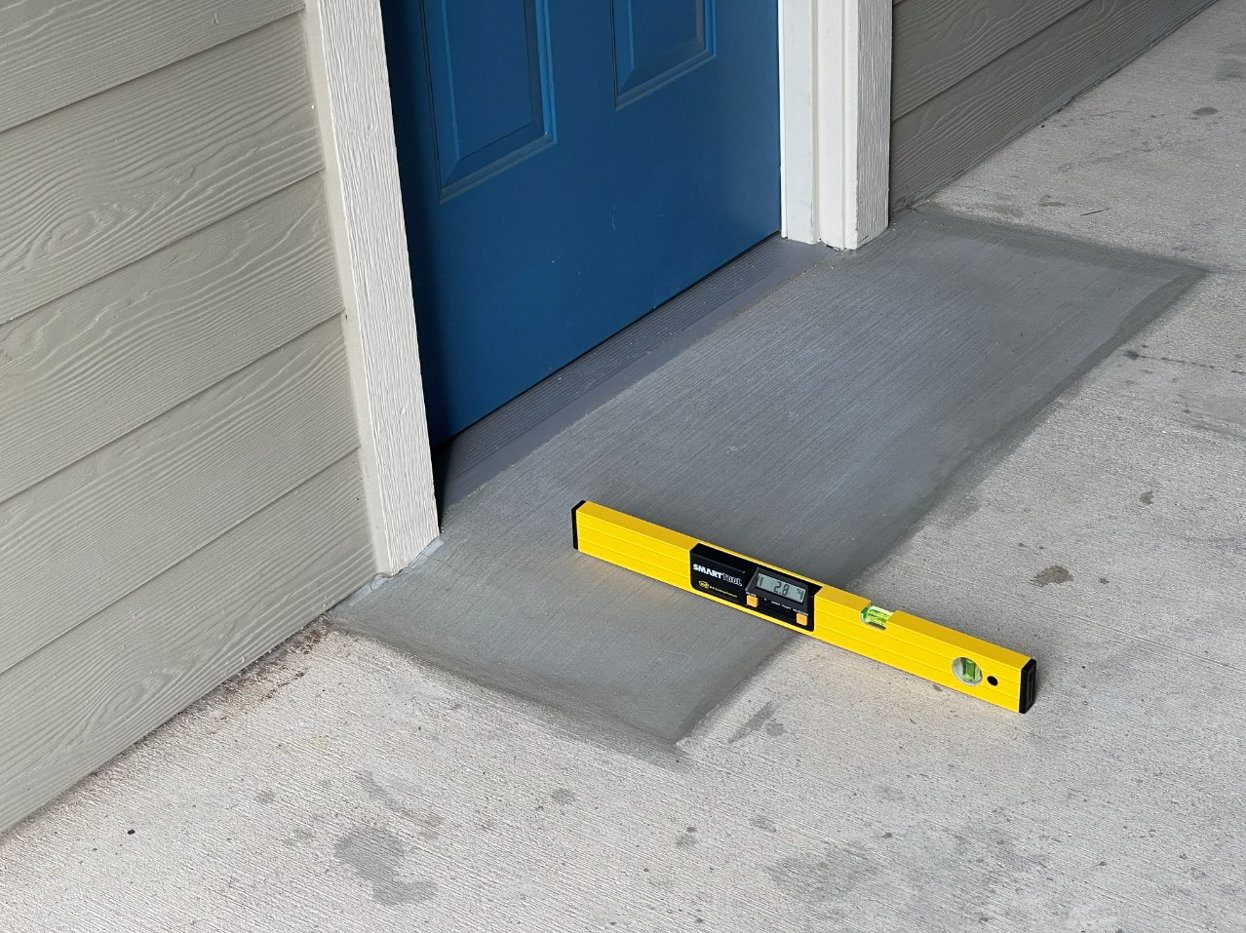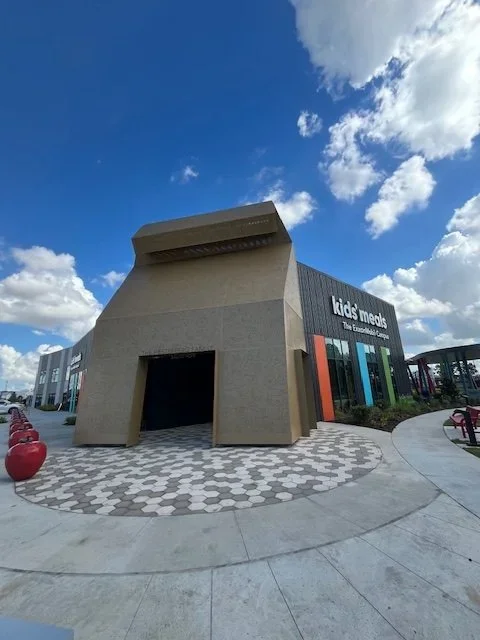October 2025 Newsletter Topics
🔷 Accessibility FYI: Door Clearances & the 2% Rule
It is one of those subtle construction adjustments that can turn into a compliance issue down the line. We often see it when a contractor tries to "make up" the difference between sidewalk elevation and finish floor elevation by slightly tilting the concrete pad at an entry. The goal is to create a smooth transition, but in doing so the slope often creeps past the 2% limit, pushing the landing out of compliance. The result can be a perfectly poured but perfectly noncompliant maneuvering area. The fix is simple: verify grades early. It is always easier to form a flat surface than to grind one back into compliance later.
🔷 RAS Corner: The Unexpected Hazards of Inspections
Some site hazards are obvious, such as open trenches, fresh paint, or the occasional forklift in reverse. Others are six pounds of fury wearing a collar. During a recent inspection, one of our RAS team members was met by a Chihuahua guarding a sidewalk like it was Fort Knox. We have faced all kinds of challenges in the field, but few have matched the tenacity of that tiny four-legged gatekeeper. Encounters like these remind us that fieldwork is not just about technical accuracy; it is about adaptability, patience, and knowing when to let the little dog win.
🔷 Project Highlight: Kids’ Meals Office and Warehouse
Every once in a while, a project reminds us that accessibility is more than a code requirement; it is a bridge to community impact. The new Kids’ Meals Office and Warehouse in Houston supports an incredible mission: ending childhood hunger by delivering free, healthy meals to the doorsteps of Greater Houston’s hungriest preschool-aged children and, through collaboration, providing their families with resources to help end the cycle of poverty.
ACI provided TAS plan review and inspection for this two-story tilt-up concrete and steel structure, which houses a café, training rooms, offices, and a high-pile storage warehouse for meal preparation and distribution. Ensuring clear routes, compliant entries, and accessible service areas means this facility is not only efficient but also welcoming and inclusive to all who serve, visit, and benefit from its work.



